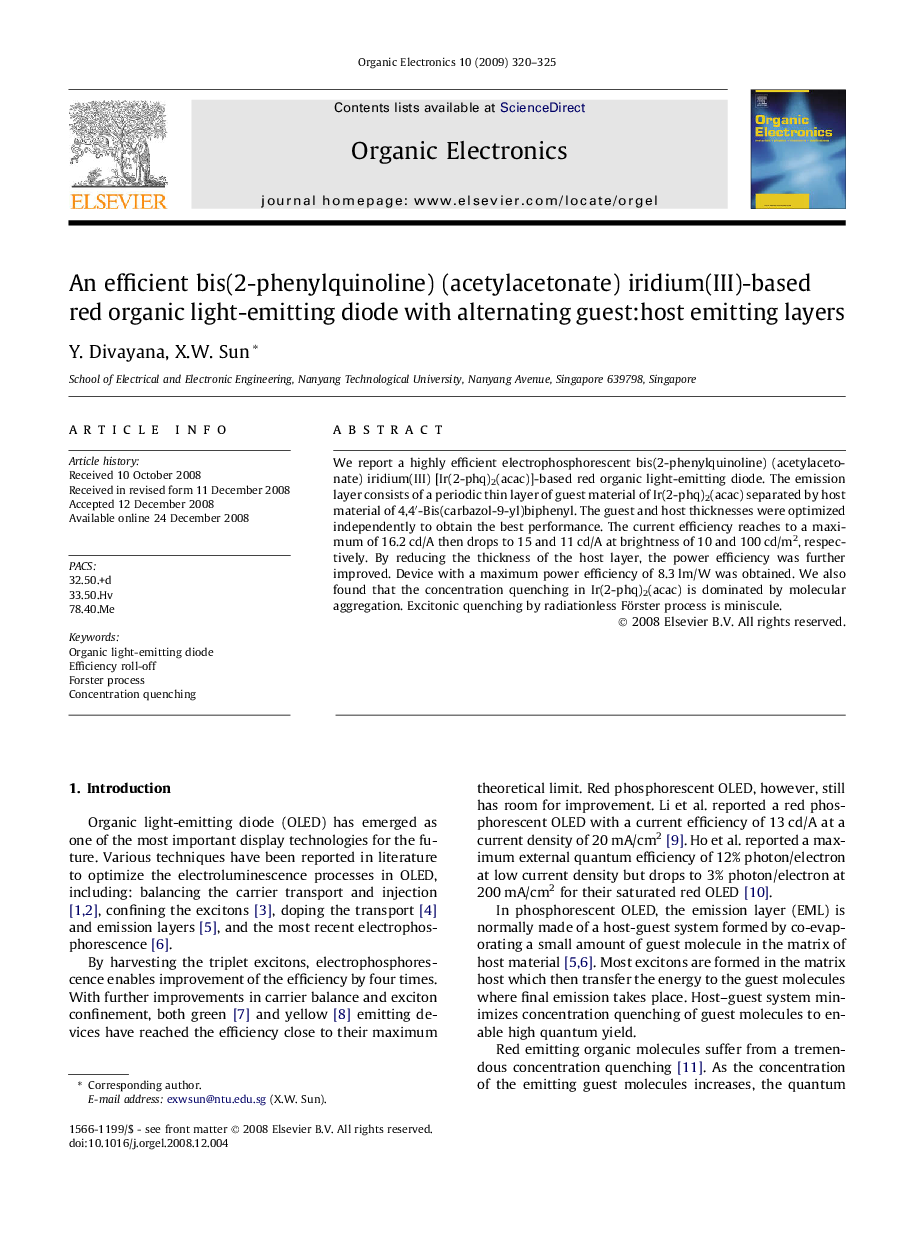| Article ID | Journal | Published Year | Pages | File Type |
|---|---|---|---|---|
| 1265192 | Organic Electronics | 2009 | 6 Pages |
We report a highly efficient electrophosphorescent bis(2-phenylquinoline) (acetylacetonate) iridium(III) [Ir(2-phq)2(acac)]-based red organic light-emitting diode. The emission layer consists of a periodic thin layer of guest material of Ir(2-phq)2(acac) separated by host material of 4,4′-Bis(carbazol-9-yl)biphenyl. The guest and host thicknesses were optimized independently to obtain the best performance. The current efficiency reaches to a maximum of 16.2 cd/A then drops to 15 and 11 cd/A at brightness of 10 and 100 cd/m2, respectively. By reducing the thickness of the host layer, the power efficiency was further improved. Device with a maximum power efficiency of 8.3 lm/W was obtained. We also found that the concentration quenching in Ir(2-phq)2(acac) is dominated by molecular aggregation. Excitonic quenching by radiationless Förster process is miniscule.
